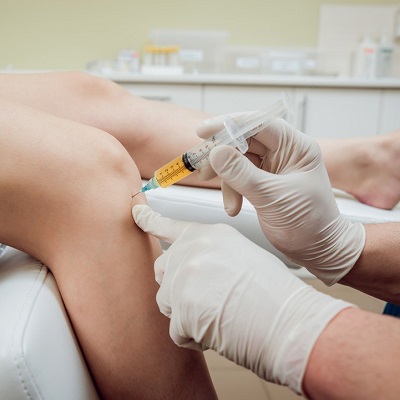
Following PRP treatment, people fear how best to position their knees to facilitate healing properly. Because of this concern, people end up needing clarification on whether it is safe or wise to bend the knee. The ambiguity of knee motion can lead to anxiety and could affect your healing process in the long run. Thus, you may potentially worsen your injuries or prolong your suffering if there is no precise instruction on how to proceed.
What is PRP Therapy?
PRP is a treatment that is done on the body using the patient’s blood. First, blood is taken from the body, and the platelets are then extracted, and the remaining element is the growth factor. The PRP can be injected into the area that needs repair or healing. PRP has been beneficial for a variety of ailments including knee joint arthritis, ACL injury, rotator cough tear, and shin splint.
The Healing Process After PRP:
Initial Recovery Phase:
This means that after you have undergone PRP treatment, you may experience some swelling, redness, or even slight pain in the specific area. This is normal and forms part of the healing process. One has to avoid such challenges for a few days to allow wounds to heal and the body to recover from the challenge.
Inflammatory Phase:
Some inflammation is initiated immediately after the PRP therapy or at least a few days after. At this time, the body responds to the treatment by increasing the blood flow to the infected area and begins, therefore, to send immune system cells to the area to commence its healing process.
Proliferative Phase:
After that, the proliferative phase begins after some inflammation has taken place. This is when tissue formation or the building of new tissue starts reoccurring. PRP contains platelets that secrete growth factors necessary in the synthesis of collagen and other required components of tissue healing. Expect improvements in pain and function as the new tissue begins to form. This phase can take several weeks, and this is when one starts to experience more weight in terms of healing.
Remodeling Phase:
The last stage in the healing process is the remodeling stage, at which the resultant tissue strengthens. During this stage, which may last several months, the tissue becomes more robust and more functional. Strength and range of motion should further increase, and the area being treated should return to regular activity.
PRP Therapy for Knee Injuries:
PRP Therapy and Knee Injuries Osteoarthritis and ligament injuries of the knee can be managed through PRP therapy. Based on the available studies, PRP may provide pain alleviation and function improvement regarding knee disorders and may therefore be considered a valuable therapeutic approach.
Guidelines for Knee Movement Post-PRP:
Immediate Post-Treatment Care:
Adhering to primary care after PRP is essential for the successful outcome of your treatment. The patient should not engage in rigorous exercises and should endeavour to raise the affected knee to minimize swelling. Ice can also manage discomfort. Adhering to your doctor’s orders on rest and care is critical in preventing further issues and helping your body heal.
When to Start Bending Your Knee?
The exact time it may take to start knee movement may also depend on the extent of the injury treated or the person involved. Usually, it is advisable to wait for three to a week to engage in any bending exercises after being discharged by a doctor.
This duration will depend on aspects like the severity of the knee injury and the body’s general reaction to the PRP treatment process regarding the movement of the knee. Your medical team will give you more advice regarding your situation, depending on your condition, to help you regain your health.
Recommended Exercises:
After consulting your doctor, you should begin with exercises that do not put pressure on the knee while continuing the healing process. These are exercises such as sitting leg lifts and mild flexing. In the treatment process, gradually increase the rate of physical activity and the flexibility of the injured knee. It is necessary to advance progressively to ensure that the healing tissues are not subjected to intense pressure.
Potential Risks of Early Knee Bending:
Any movement of your knee before the suggested time can result in issues such as more pain or swelling. Other times, you might notice things like severe strain, inflammation, or limited motion. If you are having any of these concerns, it is advisable to pause all the activities and seek the opinion of the doctor.
Consultation:
PRP therapy is helpful in treating knee injuries, but the correct treatment procedure must be followed.
Visit the Dynamic Clinic PK to get professional guidance and ensure that you are going in the right direction during the healing process. Consulting our teams of experts will assist you in getting the most out of your PRP therapy.



